SummaryAirport Rating ***** Reception of locals ***** Cost: ££££ Update: I originally posted this in 2019 but I've updated in 2024 following another visit. Updates in italics
Outpost of EmpireI can't remember when or how my fascination with Hong Kong began, but I do know that ever since I can remember, Hong Kong has been the city I've been most curious about. It might have been the Rush Hour films that I watched when I was younger, or the 'End of Empire' ceremony that accompanied Britain handing over Hong Kong to China in 1997 or maybe just the idea of a city full of skyscrapers - whatever it was, left a huge impression on me. Hong Kong has been inhabited for thousands of years, but much like Singapore, it only really became an important city with the arrival of the British. In perhaps one of the most evil wars you will ever come across, Hong Kong Island was ceded to the UK following the Opium War of 1842. Strange name for a war, you might think. Well, the British were importing a lot of goods from China, things like porcelain, tea and silk. Usually, the British would balance this trade by exporting their industrial and manufacturing goods, but the Chinese population just weren't interested, creating a huge trade imbalance (something you see with the US and China today). However, instead of Tweeting angrily and slapping some tariffs on trade, British leaders came up with a pretty messed up solution. They exported opium to the Chinese via India. Yep, Britain decided to become the biggest drug dealer in the world. The plan worked, the Chinese very quickly became addicted to opium, and demand for the drug was high, meaning Britain could pump more opium into China, and make money off its sales. The Chinese leadership asked the British Empire to stop, and when they didn't the Chinese forcibly began an anti-drug policy whereby they closed opium dens and burned any opium coming across the border. Sounds sensible, right? Well the UK didn't think so, instead declaring war on China, beating them, re-opening the drug routes and then taking Hong Kong too. The British were given Hong Kong Island in perpetuity (i.e. forever), and 50 years later they got the New Territories, a much larger piece of land on the mainland, on a 99 year lease - remember this as it becomes important later. In the 150 years Hong Kong was under British rule (with a brief period of Japanese rule), Hong Kong quickly became one of the largest and most commercially successful cities in the world. As a financial behemoth, Hong Kong attracted businesses from all over the world. It currently has the most ultra-high net worth individuals per capita in the world. It also has the largest number of skyscrapers in the world. As the city headed into the 1980s, the lease on the New Territories were coming to an end. 99 years sounds like forever when you're signing it, but the Chinese had no intention of allowing Britain to renew the lease. With most of the infrastructure that made the city work including reservoirs, electricity stations etc. in the New Territories, and Hong Kong Island being only a small part of the city, the UK realised that holding onto Hong Kong was no longer possible. In 1997, Hong Kong was formally handed back to China on the condition that the city would have a large amount of autonomy for 50 years, and China would respect its laws and customs. For Britain, this was the largest territory it retained from its days as the global superpower, and for many, this was the end of Empire. Since 1997, Hong Kong has continued growing, although questions have been asked about interference from the mainland in the politics and economy of the city. Either way, it remains a city that attracts European immigrants en masse for work, and tourists from all over the world. I was incredibly excited to be able to spend just under a week in a city that I've longed to see. When I last visited in 2019, I didn't have any idea what was around the corner. Several months after my visit, the Hong Kong protests took-off, a large-scale resistance against increasingly assertive control by mainland China. Millions protested and thousands were arrested or injured. Many decided to leave Hong Kong forever and it is clear that the city has changed irreversibly. It's no longer Asia's financial centre, with much of the business shifting to Singapore, and those immigrants from Europe have slowed to a trickle, with emigration now more likely. An assault on the sensesIf that heading seems familiar, it's because 4 years ago, I used it to describe Bangkok, but this was something else. I've visited Singapore on a few occasions now, and as Hong Kong is considered a rival I half expected a very modern city, quite ordered and very clean - similar to Singapore. I couldn't have been more wrong. As soon as I landed in the airport and headed for the taxi stop I felt the difference straight away. There were three different coloured taxis; blue for Lantau Island, green for the New Territories and red for Hong kong Island - and these taxis looked like something out of GTA Vice City - old school, 1980s cars with cassette players and what seemed like old, crazy taxi drivers. For the first time on my travels, I initially felt very overwhelmed. The sights, sounds, smells - the shadows of hundreds of skyscrapers casting darkness on streets covered with millions of people. I literally had to go to my room, take a few deep breaths and just relax for an hour or so before I felt ready to go back out. This city really is full-on! When I reemerged from my recharge, I felt a lot more confident about taking the city on. Many people here speak English, but not all - in fact, probably not the majority which surprised me a little. I began by eating food in a hole in the wall type of eatery. I was the only non-Chinese it seemed, and it was a crazy experience. Everyone was packed into a small room and I had to communicate with gestures, a lot of pointing at pictures. An older man next to me could tell I was a little out my depth when the food came and using gestures taught me how to tackle the food. It was good (and more importantly for me) it was cheap. It's not all cheap. Hong Kong is famous for its Dim Sum, and while there are certainly cheaper options, in terms of filling you up, it's an expensive food. In fact, during one of the evenings I visited Mott 32, a highly recommended restaurant. I hated it. It was super posh, and super expensive - and although the food was nice, I spent the equivalent of £30 pound on what felt like starters. I thought Dim Dim Sum in the Wanchai area was nicer, cheaper and much more relaxed and casual. You can get pretty much any type of cuisine, in what is a global city, so food shouldn't be an issue for anyone. Peak timesThe first thing I wanted to do was head to Victoria Peak, aka The Peak. The Peak is the highest point on Hong Kong Island and provides views across the harbour onto Kowloon and the New Territories. The area surrounding it is some of the most expensive real estate in the world, home to millionaires, celebrities and politicians. I decided to take the most touristy route and used the Peak Tram. The Tram is a great way to get from sea level up the hill to the observation point - it's direct, quick - but on the flip side it is expensive and there is usually a queue. I got lucky during the early afternoon and managed to arrive at a time when the queue was very short. I got to the ticket office and asked for a ticket to the top and the attendant replied $99 (HKD). Turns out they automatically add the price of the 360 observation tower at the top of the hill. Only, there's no point buying a ticket for it because some of the best views are from the hill itself - so I asked him to remove the price for the tower and the trip became $50 (or about £5). The tram takes a few minutes to climb the hill. but it does so at a very steep gradient. If you aren't sitting down or holding onto something, you're falling over. I got to the top, exited the tower (which is a task in itself) and headed to the closest look out point. It was slightly foggy but the view was amazing - in front of you are all the skyscrapers of the city on both sides of the harbour. Even though I was quite a bit away, it really felt as though I was in amongst the skyscrapers. The greenery of the hill only added to cityscape and I found myself entranced by scale of the city. The view in the day was good, but the view at night is something else. I returned a few nights later to see what the view was like when the lights of the city were on display. I decided to catch a public bus - for the equivalent of £1 it's much cheaper than the tram but it also takes a lot longer but the views are much better. I sat on the left side of the bus and watched as the bus wound up the hill, snaking its way through the greenery, surrounded by skyscrapers. Honestly, the only bus journey I can compare was the one I took to Positano on the Amalfi Coast in Italy in terms of views. During my time in the city, I'd heard about a secret lookout point, far from tourists. Once I got dropped off by the observation tower, I headed behind the tower and shopping centre into a small path called Findlay Path. It was a path that got progressively quieter and smaller. I was told there would be many times I'd think to myself that I'd found the secret view, but once I saw it, I'd know. The path was eerily quiet and about 5 minutes in I saw a clearing, but continued walking. The path continued to wind around the hill and at one point, I could barely see in front of me - here's a photo of the path. After 10 minutes of walking I saw about 3 people standing by some railings - I'd reached the secret spot .... and it was was better than I could have imagined. It was quiet, and the view, jaw dropping. I've seen city views from hills many times; Barcelona, Vienna, Rio, Edinburgh, Rome, and Naples all spring to mind, but this was on a whole different level. I felt like a moth, addicted to the lights of the city below. This time there was no fog at all, it was a completely clear night and I could see for miles. The Hong Kong Light Show was going on below but just watching the lights of the skyscrapers dance around in the night sky, sparkling like jewels is something that will stick with me forever. Honestly, if you get a chance to visit Hong Kong, find Findlay Path, and walk those 10 minutes to get the view of a lifetime. GardensIt was another fairly long bus journey from Hong Kong Island to the Kowloon Walled City Gardens. The gardens are built on the infamous former Walled City - a landmark that has long fascinated me. Built as a military stronghold in the 15th century, the Walled City fell between the British administration in Hong Kong and the Chinese Qing government on the mainland. The area developed into a centre of crime and vice. In the 1980s, over 50,000 people lived in an area the size of a couple of blocks. Buildings were often constructed with no foundations, and the structures were so densely packed together that no sunlight could reach the alleyways within. If you've never heard of it, I encourage you to Google it now - you won't believe it existed until you see it. It looked like something from Judge Dredd, like a dystopian future, but some of the poorest inhabitants in the city called the Walled City 'home'. These days the area has been transformed into a park but I wanted to see the size of the area and see whether there were any traces of the Walled City left. The Gardens are very pretty. Lakes, bridges and a lot of greenery are interspersed by open spaces and benches. Families were playing in the park, while couples strolled hand in hand. There are memorials to a past life though. A small scale model of the former Walled City was particularly fascinating, it's hard to believe that people lived in such desperate surroundings. A small building called the Yamen is the only one to remain from the middle of the 19th century and houses some exhibits to the Walled City. Chaos in KowloonI don't think I've ever been to a place as crazy and chaotic as Kowloon. I crossed the harbour to check out the night markets and started near Prince Edward station at the top of the Mong-Kok area and spent almost 3 hours walking down to the harbour area. I counted 7 night markets that I walked through during that time. First a word on Kowloon. You know those clips on TV you see of bright lights, Cantonese neon sights and thousands of people swarming out of subways - that's Kowloon. It's very easy to feel overwhelmed. The Fa Yuen Street night market is probably the prettiest (see photo above). Vendors sell all types of goods under brightly coloured tents with the more drab prison like apartment buildings on each side of the road. Nothing is cheap here (or any of the night markets). Even bartering - something I've gotten fairly good at - is difficult here. I walked down through the Ladies Market (which isn't just for ladies) the Portland night market, the Jade market, the Temple Street market and countless others. The Temple Street and Ladies markets' were among the largest and more impressive - very similar to those you'd see in south east Asia. I really enjoyed walking through them, but again, they weren't exactly cheap. I also saw some of the most disgusting things I've ever seen. I decided to go to a food market and similar to Seoul, saw fish and octopuses struggling to breathe in a few centimetres of water, covered with the bodies of their dead brethren. It was horrible, but nothing was worse than the meat market. Now I'm pretty decent with blood and gore, but there was something about pigs legs hanging up, dripping blood that made my stomach turn inside out. The smell was overwhelming, and on the floor were the entrails of the animals, being eaten by insects. I nearly physically vomited and got out of there fairly quick. Absolutely rank! The markets were busy, but every time I'd get to a road crossing, rows of people would be there waiting for lights to go green, and as soon as they did, waves of humanity would cross the road. I've never seen density like this before, not in Delhi, not in Bangkok - no where. It was an experience itself. I picked up the pace at the end so I could see the Hong Kong light show. The light show is staged at 8pm every night and is best viewed from the Kowloon side of the harbour looking toward Hong Kong Island. By the time I got there, the show had just started and there was already a sizeable crowd, but I took a direct walk to the edge of the railings and found the perfect spot. The light show was incredible, and I'd put it above Singapore and Dubai. It seems like every skyscraper in the city is dancing in the night while lasers shoot out into the distance. Boats covered in golden lights float along the waterway while music is blaring in sync with the lights. It's an experience for sure. During my second visit, I walked an hour up Kowloon into the Prince Edward area during the evening, spending a fair bit of time in the Jordan area, and criss-crossing my way through various neighbourhoods. It was a reminder of just how brilliantly metropolitan this city is, although the lack of parks and greenery in this part of the city was almost suffocating in its absence. During the day, I did a very long walk around the West Kowloon cultural area. The whole place was packed with people having picnics, while pop-up markets were still on with Christmas decorations. The area felt a little sterile, and during the daytime heat, it wasn't the most comfortable place to be, but it certainly seemed to be popular with the locals. I'm on a boat! Twice!Speaking of boats, I made a handful of crossings along the waterway separating Hong Kong Island and Kowloon. The first was through the Star Ferry. A crossing takes a handful of minutes and costs the equivalent of 25-30p. The views are great, but it's nothing special. I found it similar to the ferry crossing from Manhattan to Governor's Island and the Statue of Liberty in New York. The second was the Aqualuna and this was very cool. I met a friend of mine for an afternoon who booked an hour's trip on what they call a 'junk boat' - it's basically an old school Chinese boat, with triangular red sails. Inside there are two decks, with comfortable sofas large enough to lie down on and drinks holders on each side. The boat does laps of Victoria Harbour and we arrived at sunset giving us incredible panoramic views of both sides of the harbour. It was about as relaxing as Hong Kong got. Central and the Mid-LevelsI didn't much like the Central part of the city. I visited a rooftop garden which was pretty nice, but otherwise it just reminded me of Canary Wharf - very business like, and a little soulless if I'm honest. Expensive shops and office buildings. I had a work meeting in the area, and while it was nice to be in air-conitioned surroundings and modernity, it wasn't my favourite place. A large ferris wheel and the lights of skyscrapers providing fleeting moments of interest in a largely corporate area. I can't say the same thing about the mid-levels though. Connecting the two areas are the central-mid level escalators - the longest covered escalator system in the world. I can't begin to tell you how much I loved something so relatively simple. It's just escalators, but honestly they feel like they go on forever. The strangest part was at one point being on an escalator going up, covered above but open on the sides, knowing there was a road below me filled with traffic, with Dim Sum restaurants on one side. I know they are only escalators, but I definitely recommend checking them out. I took the escalators to visit the Man Mo temple. I really liked the surrounding area. Quieter and fresher than Central below, quirky bars and restaurants were packed along scenic roads. The temple was built in 1847 and was a nice retreat from the city. I nearly chocked on the amount of incense being burned, the extractor fans doing a poor job taking the smoke away - but regardless, it was a nice architectural change from the skyscrapers I had just left behind. Nearby is Lan Kwai Fong, one of the main nightlife areas of the city. There were a lot of European immigrants out and about, but again, it felt quite different from similar areas in places such as Seoul or Singapore. As with the rest of the city, where space is at a premium, it's densely packed which is a good thing for nightlife, as it definitely raises the energy by a few notches. I revisited this whole area during my second visit, retracing many of my steps in an area of the city that I really enjoyed. This time I rode the mid-level escalators all the way from bottom to top. I know, I know - they're just escalators, but even 5 years later, I still can't get over how much of a fun way this must be to commute to work. Definitely one of my favourite parts of the city. Lantau Island and the Big BuddhaI was in two minds about whether I wanted to visit the Tian Tan 'big Buddha' on Lantau Island - I'm glad that I did. My conflict came from the distance, it takes almost 2 hours to get from the Wanchai area to Lantau Island and a 4 hour round trip just seemed excessive but I decided to give it a go. It's fairly straightforward getting there - the Tung Chun line goes directly from Central to Lantau Island - but that only gets you to the island - it's another 30 minutes to the Tian Tan Buddha. Now, I know what you're thinking, another 30 minutes after pretty much an hour on a train doesn't sound exciting but it is - because the last 30 minutes are on cable cars. The cable cars aren't cheap and cost almost £20 for a round trip but they are worth it. The views from the top are just stunning. The cable cars first go over a small waterway, before skirting the perimeter of the airport. Watching planes take off from cable cars is quite an experience. The cars then go up and down a couple of hills, leaving the skyscrapers around the train station far behind. Below you can clearly make out the hiking trails and hardened individuals hiking the hills. The greenery is a massive break from the concrete jungle of the city. As I got closer to the destination, I could see the Big Buddha in the distance, sticking out over the hills, a sight I won't soon forget. I arrived at a pseudo theme park - no rides - just souvenir shops and a layout that reminded me of Drayton Manor Park in the Midlands. Not sure what I made of that, but I did like the Big Buddha. The only thing I can compare it to is the Big Buddha on Ko Samui in Thailand, and although its been a few years since I was in Ko Samui I could tell this one was much, much bigger. Built in 1993, it's relatively new, but that shouldn't detract from its beauty. It was a very hot day, and having come out of a meeting, I was suited up - not a good look. I was sweating buckets by the time I reached the top but it was a nice climb. A short walk across the courtyard is the Po Lin monastery, a Buddhist monastery dating back over 100 years. It's a definitely worth crossing the courtyard for it - I mean it'd be kinda stupid coming all this way, to not walk the extra 30 seconds. I get aroundI stayed in the Wanchai area. It's pretty full on. I found myself in the middle of a pro-Chinese rally (I guess this foreshadowed the huge unrest that was right around the corner that I was completely unaware of during my visit), I was propositioned by a 50 odd year-old prostitute, and at one point found the seediest place in Asia (Lockhart Road). There is nothing more depressing than seeing men in their 40s and 50s from Europe hanging out with Asian prostitutes. Grim doesn't even begin to describe it. But there were also nice areas, where the streets were a little cleaner, the shops a little more boutique and the people a little less....well, creepy. My favourite place was an outdoor sports pitch with stands for spectators. I walked in one warm evening, and spent about 30 minutes watching a local football match. I saw some quite different parts of Hong Kong, but getting around is very easy. It's an easy place to walk, and I did a lot of that. The subway/metro system is easy to navigate, relatively cheap, punctual and very clean. Some of the stations were fairly big, and they are much better than equivalents in Paris and New York. Unlike Seoul, announcements are made in Cantonese and English, so it's easy to figure out where you are and where you need to be. I did most of my travelling on the subway and found it a good way to get around. I've already spoken about my bus journeys. As a former British colony, you've got the double decker buses, although they are definitely smaller, as I found out every time I'd hit my head off the ceiling. I've also spoken about the crazy taxis - I only ended up catching the one. I loved the tram system. It's pretty old school, not the quickest, but definitely the cheapest. It costs like 2p to use them - seriously. They were very good travelling between Wanchai and Central, and they look amazing. Each tram is decorated slightly differently, and watching them navigate the roads was something I enjoyed. I also caught the train back to the airport. Much cheaper than a taxi and significantly quicker. What I really liked was the fact you can check in at the train station, drop your bags off and they'll meet you at the airport. The airport itself is a fairly big one, one of the busiest in the world. I had absolutely no issues going through airport security as a Sikh - and I rarely seem to in the far east. GurdwaraOn Hong Kong Island, I visited a local Gurdwara - the Khalsa Diwan. Located a short walk from the expensive Wanchai area, and at the base of the hill to the Peak, I couldn't help but think how expensive the land must have been. The Sikh style architecture on the outside makes it quite obvious what it is. Inside it was fairly quiet, a small-medium sized Gurwara, and I spent some time just relaxing in the peace and quiet before hitting the city again. I returned 5 years later and could scarcely believe the transformation that had taken place. During my last visit, the Gurdwara was moderately sized, but during my second visit the entire structure that I remembered was now just a small corner of this massive new Gurdwara. It was probably the biggest glow-up that I have ever seen. The modern Gurdwara towers on the corner of the road in Wanchai that I last visited half a decade ago. Inside, the marble interior is a clean white. In the courtyard at the back, I saw half a dozen youngsters playing football while listening to Immortal Productions Shaheedi albums, and it really reminded me of my childhood - it was great to see. Upstairs there is a langar hall dedicated to the victims of the 1984 Sikh Genocide as well as those Sikhs that stood against the Indian state. On the top floor is the darbar hall, a beautifully decorated space where the community can visit and listen to the Shabd Guru. During my visit there was a program of katha (exposition) going on and there were a fair amount of people sitting and listening to speakers despite it being the middle of the day. It is honestly one of the most stunning Gurdwareh that I have ever seen - and I still can't believe just how much it has changed in a short period of time. Is Hong Kong worth visiting?Yes, yes - definitely yes - unless you don't like chaos.
It's honestly insane. Personally, I found it infinitely more interesting than Singapore, although at times it did get a bit much. The view from Victoria Peak is something that will stay with me forever, but there were so many highlights from this trip. This is a city that I would happily visit again, and probably will do sooner rather than later. The people were friendly. It's not as multicultural as a London or New York, but it's welcoming of other cultures. Sikhs have a mixed history here - they were after all the enforcers of British rule, and a reminder of this was on a photographic exhibit on the central-mid level escalators. I had no issues at all though - people seemed busy, shy but not unfriendly. It's a place that will stay with me for a long time, and I can't wait to go back and see the other side of Hong Kong; the beaches and hiking trails. If you have any trails you'd recommend, leave a comment below. Comments are closed.
|
AuthorBritish Sikh, born in the Midlands, based in London, travelling the world seeing new cultures. Categories
All
|



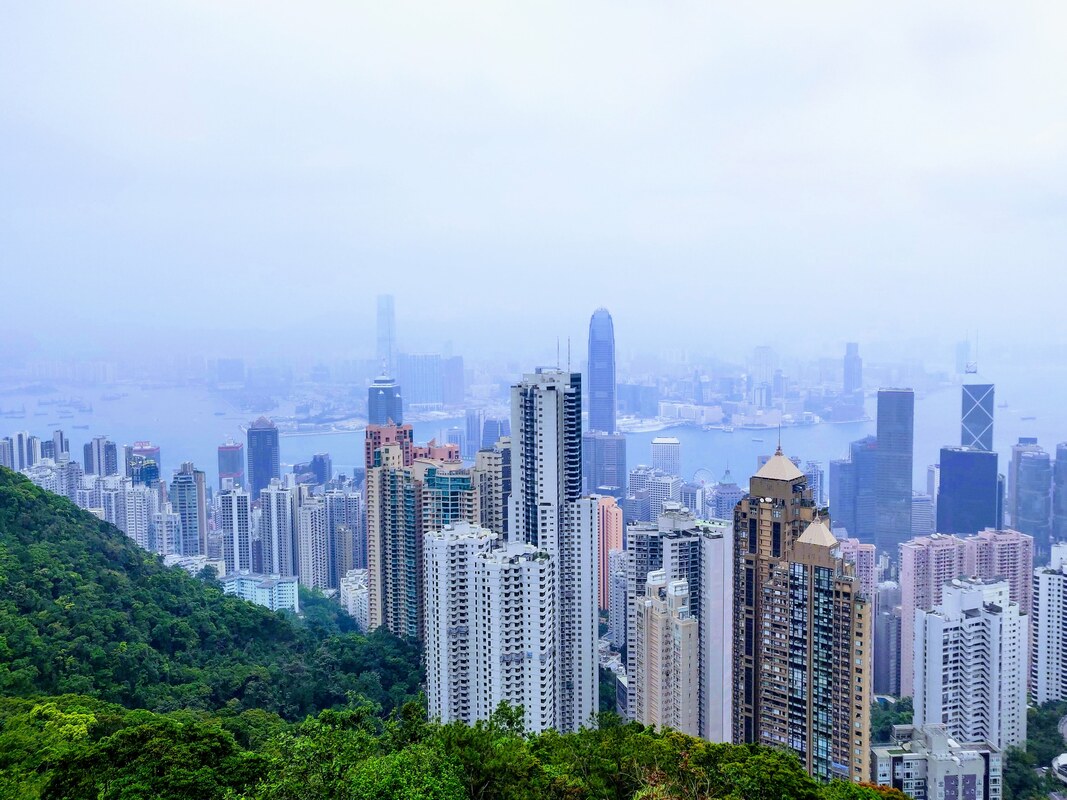

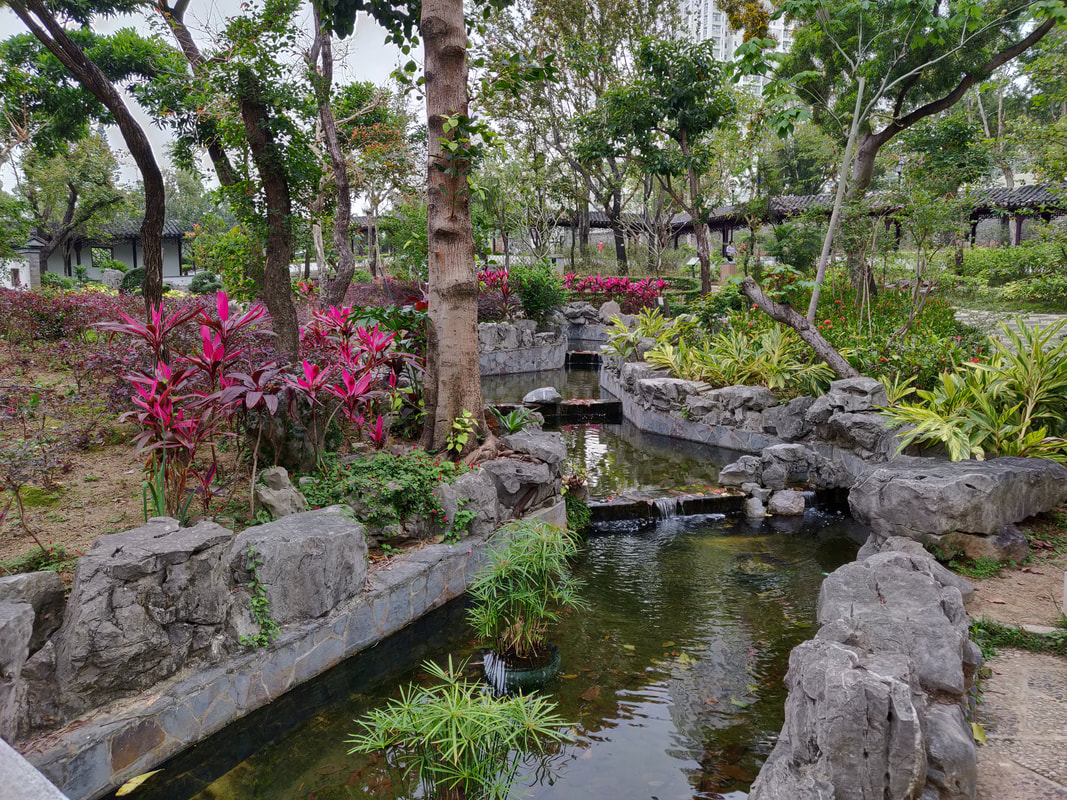
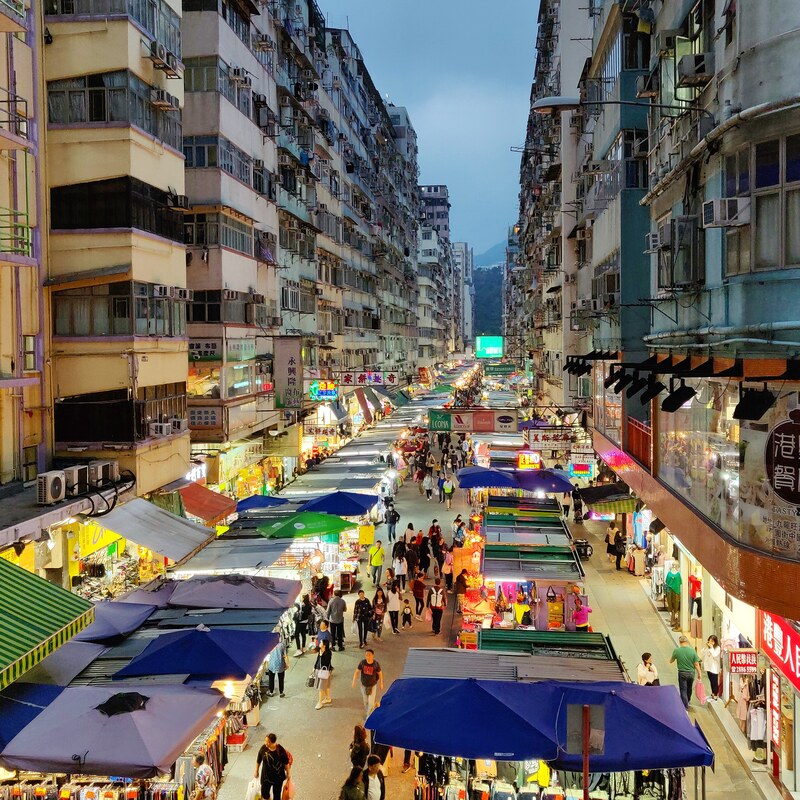
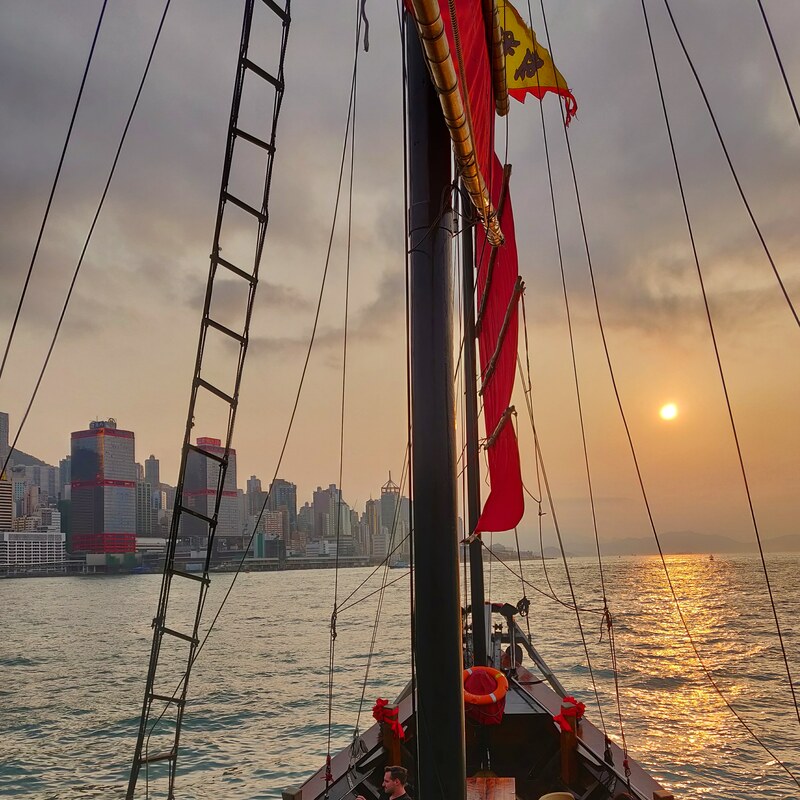



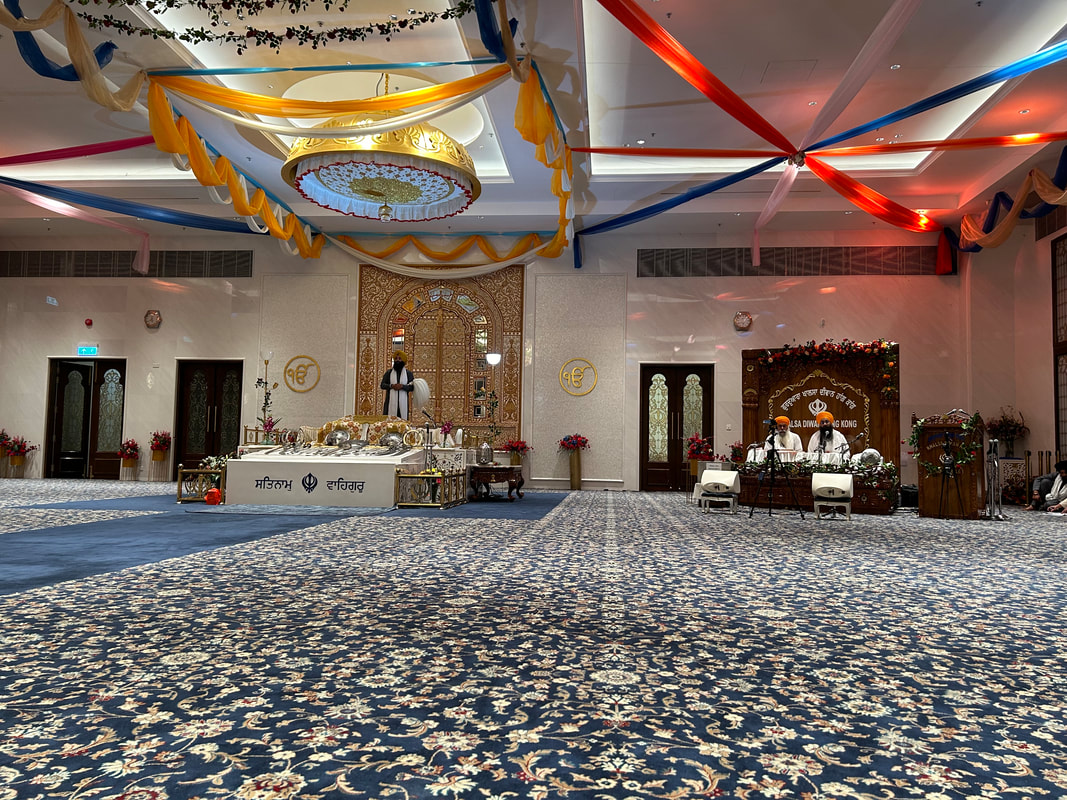
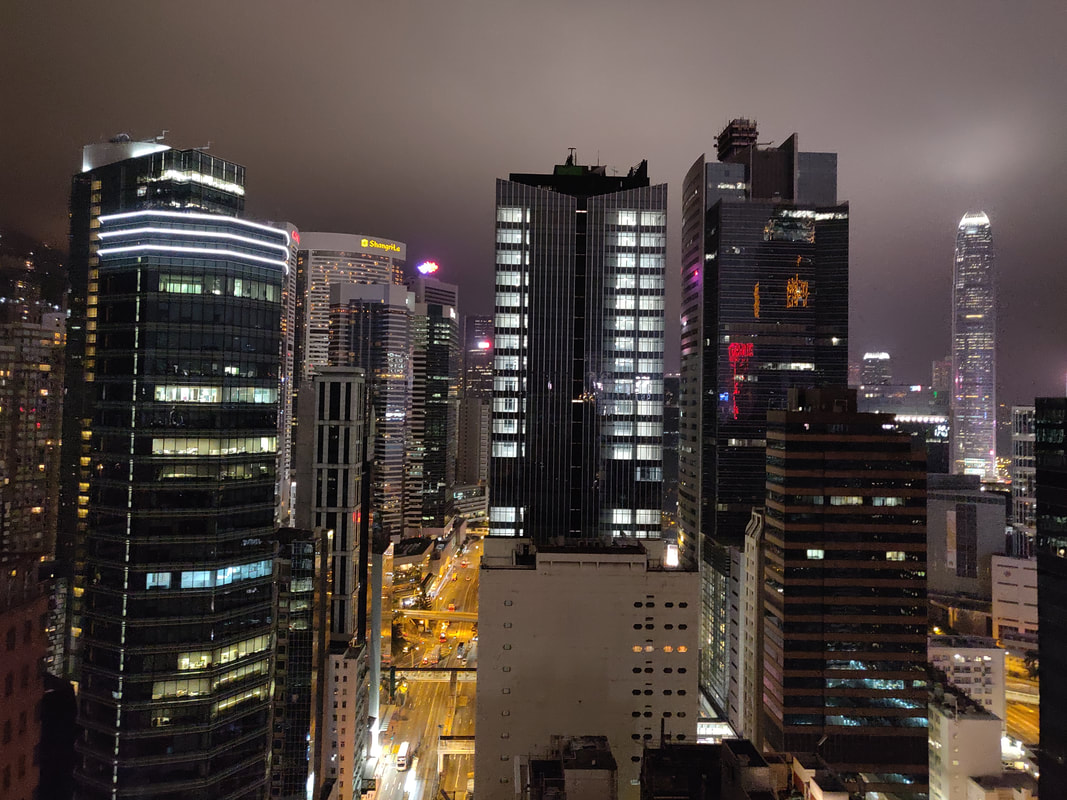

 RSS Feed
RSS Feed